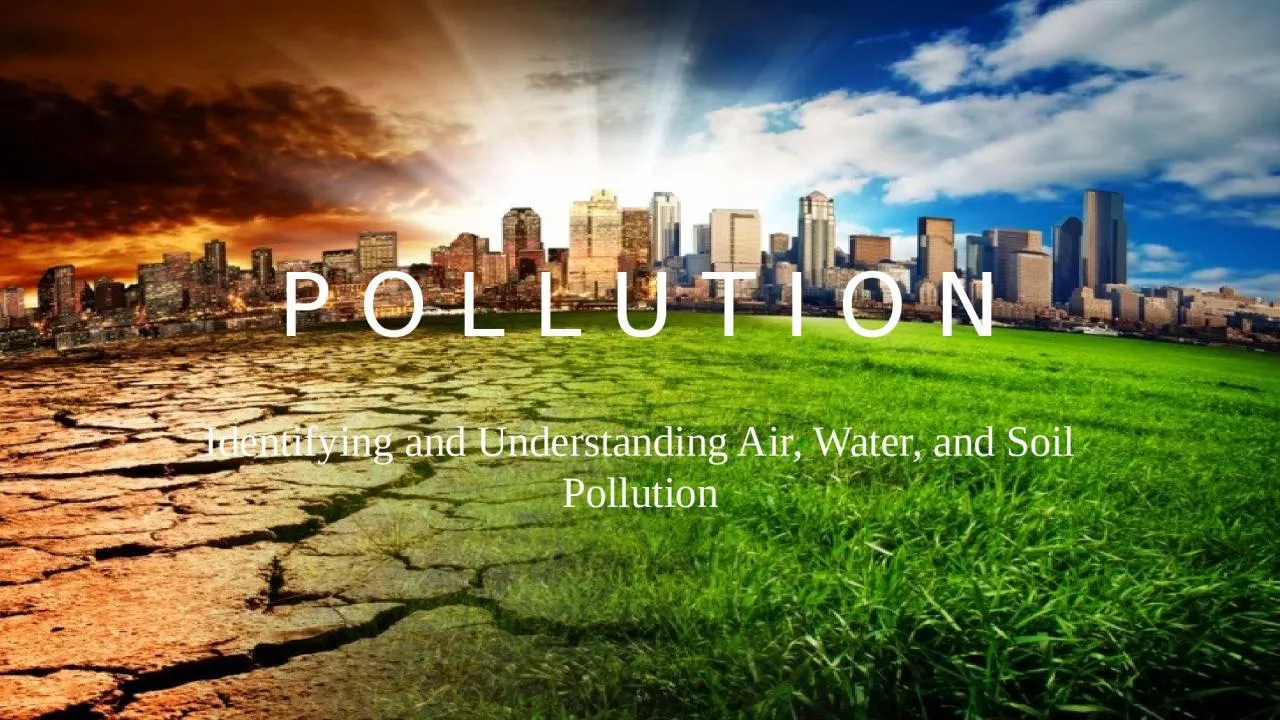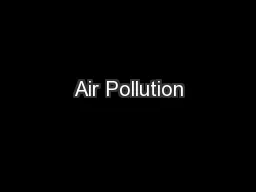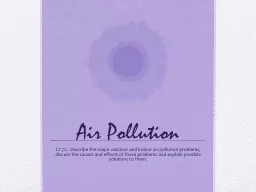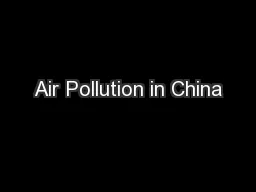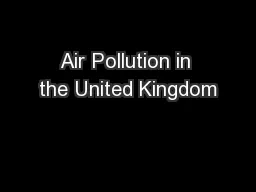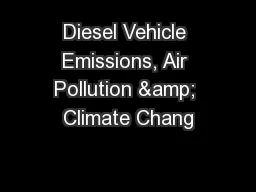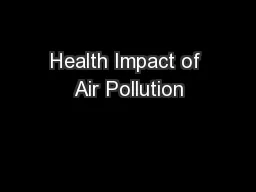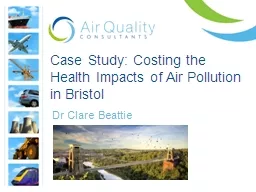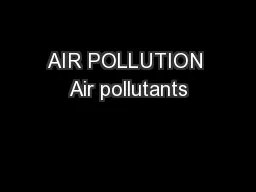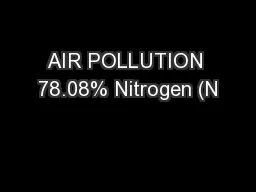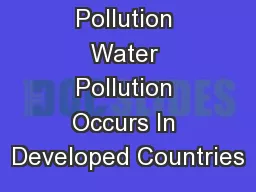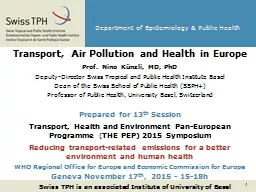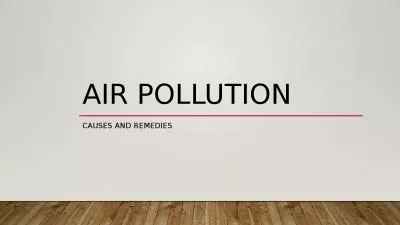PPT-P O L L U T I O N Identifying and Understanding Air, Water, and Soil Pollution
Author : jacey | Published Date : 2023-10-04
Water Pollution Causes illness and death in humans and other species and disrupts ecosystems The chief source of water pollution are agricultural activities industrial
Presentation Embed Code
Download Presentation
Download Presentation The PPT/PDF document "P O L L U T I O N Identifying and Unde..." is the property of its rightful owner. Permission is granted to download and print the materials on this website for personal, non-commercial use only, and to display it on your personal computer provided you do not modify the materials and that you retain all copyright notices contained in the materials. By downloading content from our website, you accept the terms of this agreement.
P O L L U T I O N Identifying and Understanding Air, Water, and Soil Pollution: Transcript
Download Rules Of Document
"P O L L U T I O N Identifying and Understanding Air, Water, and Soil Pollution"The content belongs to its owner. You may download and print it for personal use, without modification, and keep all copyright notices. By downloading, you agree to these terms.
Related Documents

